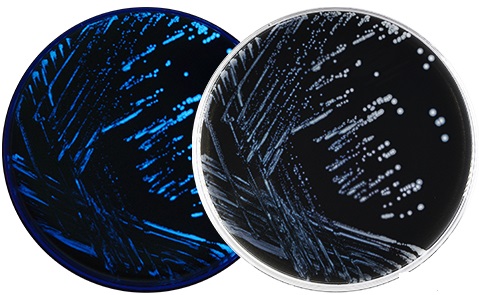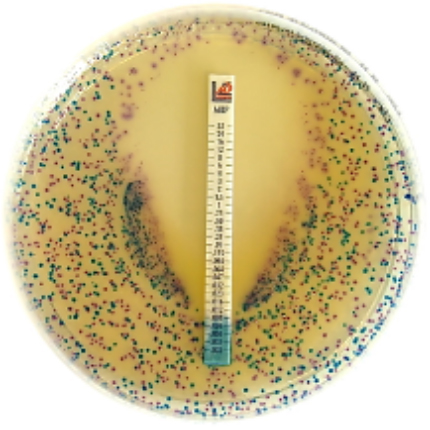Buffered Charcoal Yeast Extract (BCYE) Agar is used for primary isolation and cultivation of Legionella pneumophila and other Legionella species from environmental samples and clinical specimens. BCYE Agar is an enriched medium for isolation and cultivation of Legionella species.
Legionella species are aerobic, intracellular, Gram negative bacteria comprising more than 50 species and 70 serogroups that are cause disease in humans. L. pneumophila is the species that causes bacterial pneumonia (Legionnaires’ disease) in human population globally. The most frequent serogroups known to cause clinical episodes and disease in humans are the serogroups 1, 4, and 6. Pontiac Fever is another disease caused by L. pneumophila in human population aside Legionnaires’ disease.
BCYE agar is a selective growth medium used to culture or grow certain types of bacteria, particularly the Gram-negative species Legionella pneumophila. It has also been used for the laboratory diagnosis of Acanthamoeba keratitis, Francisella and Nocardia.
BCYE agar formulations are recommended for use in the cultivation and primary isolation of Legionella spp. in water and other samples suspected of harboring the bacteria. BCYE without Cysteine is for use in conjunction with BCYE Agar containing L-Cysteine for identification of Legionella spp. from clinical and environmental sources.
Generally, BCYE agar formulations are recommended for use in the cultivation and primary isolation of Legionella spp. in water and other samples suspected of harboring the bacteria.
The formulation of BCYE formulation employs the use of L-Cysteine, soluble ferric pyrophosphate, and alpha-ketoglutarate to enhance the growth of Legionella species. Activated charcoal removes toxic metabolic products. Protein and other growth nutrients are supplied by yeast extract.
Types of BCYE
- BCYE Agar (Buffered Charcoal Yeast Extract: Buffered Charcoal Yeast Extract (BCYE) Agar formulations are recommended for use in the cultivation and isolation of Legionella spp. in water and other samples suspected of harboring the bacteria.
- BCYE Selective Agar (Buffered Charcoal Yeast Extract) with CCVC antibiotics: Buffered Charcoal Yeast Extract Selective Agar with Cephalothin, Colistin, Vancomycin, and Cycloheximide. For the selective isolation and cultivation of Legionella from environmental and clinical specimens.
- BCYE Selective Agar (Buffered Charcoal Yeast Extract) with CAV antibiotics: Buffered Charcoal Yeast Extract Agar with Colistin, Anisomycin, and Vancomycin antimicrobials. For the selective isolation and cultivation of Legionella from environmental and clinical specimens.
Composition of BCYE Agar
| Ingredient | Amount (g/L) | Purpose |
| Agar | 12.0 | Solidifying |
| Yeast extract | 10.0 | Vitamins, nitrogen, and carbon |
| ACES buffer | 10.0 | Buffer |
| Activated charcoal | 2.0 | Decomposes hydrogen peroxide, a toxic metabolite of Legionella |
| Potassium hydroxide | 2.8 | pH (target shall be 6.9±0.2) |
| Alpha-ketoglutarate | 1.0 | Stimulates oxygen-scavenging enzymes in Legionella |
| L-cysteine | 0.4 | Provide absolutely essential nutrients to Legionella |
Yeast extract supplies the protein and other nutrients necessary to support growth.
L-Cysteine, an essential amino acid, and soluble ferric pyrophosphate, an iron supplement, are incorporated to satisfy specific nutritional requirements of Legionella species.
Alpha-ketoglutarate is added to stimulate growth.
Activated charcoal decomposes hydrogen peroxide, a metabolic product toxic to Legionella species, and may also collect carbon dioxide and modify surface tension.
ACES buffer is added to maintain the proper pH for optimal growth.
Interpretation of results using the BYCE Agar
In general, colonies of Legionella spp. present a white to gray coloration. They may also have blue, pink, purple, maroon, greenish-yellow or dark red pigmentation that fades, becoming whiter and more filamentous with age. The colony surface is generally smooth with precise edges, but some strains may give a ground glass or “fried egg” appearance when viewed microscopically. Some species fluoresce under UV light. On BCYE and BCYE Selective Agars, colonies of Legionella pneumophila appear white-gray to blue-gray and fluoresce yellow-green under long-wave UV light.
Colonies of Legionella bozemanii appear white-gray to blue-gray and fluoresce blue-white under long-wave UV light. Colonies of Legionella micdadei do not fluoresce under longwave UV light. On BCYE with DGVP, all strains of L. pneumophila produce round, shiny and white colored colonies with a barely discernable green hue at 3 days incubation. Colonies will be larger by 5 to 7 days incubation, becoming more distinctly green, flat, dull, and opaque in appearance. Tatlockia micdadei (syn. Legionella micdadei) yields shiny, round, blue-gray colonies. Colonies become larger and more intensely blue in color during prolonged incubation.
Colonies of Fluoribacter spp. appear round, shiny and distinctly green in appearance after 3 days incubation; the green coloration will deepen with continued incubation and colonies will remain shiny. Colonies of L. bozemanii will exhibit a bright pastel green coloration that will intensify over prolonged incubation; colonies will fluoresce blue-white under long-wave UV light.
Source:
Discover more from Microbiology Class
Subscribe to get the latest posts sent to your email.




